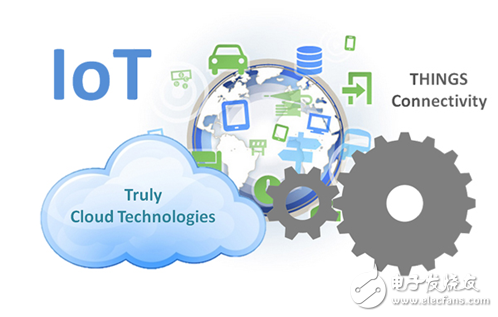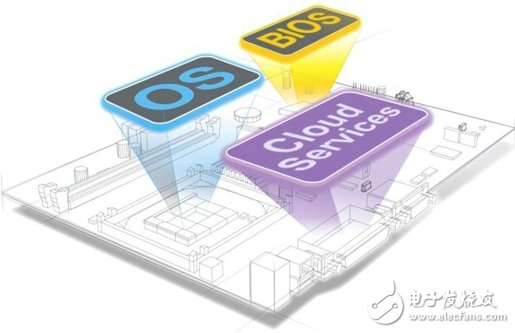IoT technology is not a separate technology, but a fusion of many existing technologies: processor technology, Internet technology, embedded system technology, sensor network technology, communication technology, RFID technology, etc. Moreover, the Internet of Things is an important part of the new generation of information technology. It is the integration of the Internet and embedded systems to the advanced stage. As an embedded system composed of important technologies of the Internet of Things, it is becoming a huge driving force for the integration of the Internet of Things.
First, let's take RFID as an example to look at the embedded technology in wireless sensor networks. The sensing layer is an important sensing node in the Internet of Things. It combines sensing technology and embedded technology. Among them, RFID is a typical representative of the sensing layer application, and RFID itself can be realized by embedded. It meets the non-functional requirements of the Internet of Things in terms of low power consumption, miniaturization, and low cost. Embedded systems are ubiquitous and ubiquitous, and they can be networked to form sensor networks, making them an important component. The first is the special design of the RF front-end; the other is the embedded system design, which is mainly based on RFID. The embedded system design of RFID products is not difficult. Most RFID read/write devices are fixed devices, and they are basically based on the embedded Linux platform.
We know that smart sensors, wireless networks and processor technologies all contain a large number of embedded system technologies and applications, while application-oriented SoC chips and embedded software are the focus of future embedded systems. We can understand that the Internet of Things is a new application of embedded systems. Compared with traditional embedded system applications, the level of IoT applications is richer and more complex, that is, real-time applications on the sensing layer, as well as Massive data processing and analysis on the computing and web application layers.

For the Internet of Things, networking is an essential element. The transport layer is mainly considered at the network layer. It is considered from network technology and communication technology, and needs to consider special networks such as industrial Ethernet, traffic, and discrete control, as well as infrastructure. Software, such as middleware, middleware functions, real-time information processing, how to deal with massive data. If you want to implement IoT applications, the IoT embedded system has its distinctive features:
1. Have a data transmission path;
2, to have a certain storage function;
3, to have a CPU;
4, to have an operating system;
5, there must be a special application;
6. Follow the communication protocol of the Internet of Things;
7. There are unique numbers that can be identified in the world network.
These distinctive features show that embedded systems have become a key technology in the Internet of Things industry. There are even opinions that the Internet of Things is the embedded system. The embedded system experienced the era of single-chip microcomputer independently developed in the field of electronic technology. In the 21st century, it entered the era of embedded systems supported by multidisciplinary. From the day of its birth, the embedded system takes "IoT" as its mission, which is embodied as: embedded in physical objects to realize the intelligence of physical objects. Many current embedded systems can be applied to the Internet of Things as long as they can improve the network communication capabilities of system devices and the technology of adding intelligent information processing.
If other technologies involve a specific aspect of the Internet of Things, such as perception, computing, communication, etc., embedded technology is the manifestation of various items in the Internet of Things, and other embedded devices are used in these embedded devices. Technology.

Future embedded products are devices that combine hardware and software. In order to reduce power consumption and cost, designers need to minimize the system kernel, retain only the hardware and software closely related to system functions, and use the lowest resources to achieve the most appropriate functions. The designer is required to select the best programming model and continuously improve the algorithm to optimize compiler performance. Therefore, software personnel must have rich hardware knowledge and develop advanced embedded software technologies such as Java, Web and WAP.
It is worth emphasizing that the Internet of Things boom will certainly drive the development of a number of electronic industries, such as logistics management, medical electronics, power control and smart home. The embedded system industry should pay attention to this opportunity and use itself in embedded systems. Accumulate knowledge and experience, explore the application of Internet of Things in a certain field, and find ways to extend the support of the background and application by integrating with the application sensing unit on the mature platform and products. And analysis functions, developed on the integrated system of IoT applications.
This article is selected from the "Embedded Technology Special Issue", more quality content, download now
Second, lithium is much lighter than other metals used in batteries, such as lead, which is important for small objects such as phones but also for cars that require many batteries. Third, lithium-ion batteries are rechargeable, because lithium ions and electrons move easily back into negative electrodes.
The new Streamlight Stinger 2020 Flashlight is powered by its SL-B26 Battery Pack to ensure a powerful performance. The two packs are protected lithium ion batteries with a 2600mAh capacity, on-board safety control circuits, and built-in USB charging ports. These batteries can be recharged up to 500 times, saving you time and money.
Power your world with GLIDA Battery Products- Lithium Ion Battery. ... The latest trend in lithium battery used in consumer electronic products and IT gadgets. It is flexible in footprint and ... $0.00. 3.7V 6000mAh 18650 (1S2P) Li-ion Battery Pack.
Lithium Ion Battery,Battery Lithium Ion,Li Ion Battery,Rechargeable Li-Ion Battery
Shenzhen Glida Electronics Co., Ltd. , https://www.szglida.com